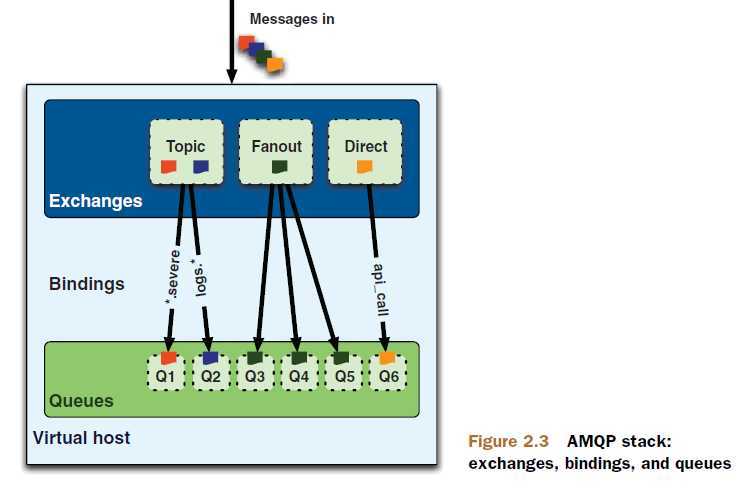标签:des style blog http color io ar for 2014
Producers create messages and publish (send) them to a broker server (RabbitMQ).What’s a message? A message has two parts: a payload and a label. The payload is the data you want to transmit. It can be anything from a JSON array to an MPEG-4 of yourfavorite iguana Ziggy. RabbitMQ doesn’t care. The label is more interesting. It describes the payload, and is how RabbitMQ will determine who should get a copy of your message. Unlike, for example, TCP, where you specify a specific sender and a specificreceiver, AMQP only describes the message with a label (an exchange name andoptionally a topic tag) and leaves it to Rabbit to send it to interested receivers based on that label. The communication is fire-and-forget and one-directional. We’ll getmore details about how RabbitMQ interprets the label later when we talk about exchanges and bindings. For now, all you need to know is that producers create messagesand label them for routing (see figure 2.1).
Consumers are just as simple. They attach to a broker server and subscribe to a
queue. Think of a queue as a named mailbox. Whenever a message arrives in a particular
mailbox, RabbitMQ sends it to one of the subscribed/listening consumers. By the
time a consumer receives a message, it now only has one part: a payload. The labels
attached to the message don’t get passed along with the payload when the message is
routed. RabbitMQ doesn’t even tell you who the producer/sender was.
, if you need
to know specifically who produced an AMQP message, it’s up to the producer to
include that information as a part of the message payload.
First, you need to understand queues. Conceptually, there are
three parts to any successful routing of an AMQP message: exchanges, queues, and
bindings. The exchanges are where producers publish their messages, queues are
where the messages end up and are received by consumers, and bindings are how the
messages get routed from the exchange to particular queues.

标签:des style blog http color io ar for 2014
原文地址:http://www.cnblogs.com/youxin/p/3964241.html